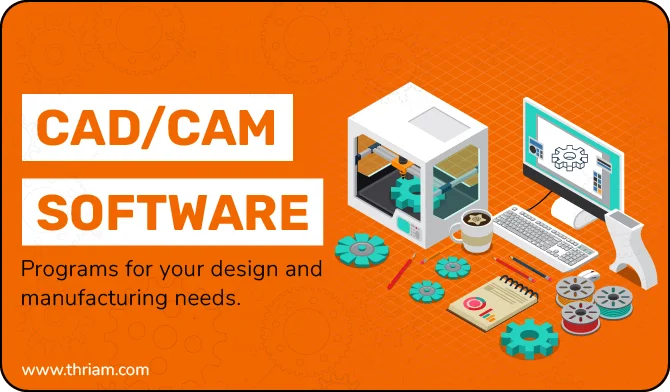Maximizing Efficiency and Precision: The Untapped Potential of CAM Automation in Mold Manufacturing

In today's fast-paced manufacturing industry, every second saved and every error avoided is crucial. That's where CAM automation in mold manufacturing comes into play. Computer-Aided Manufacturing (CAM) automation is an essential tool that harnesses the power of software and technology to streamline mold design and production processes. In this blog post, we will explore the numerous benefits of CAM automation in mold manufacturing and provide insights into its implementation.
What is CAM?
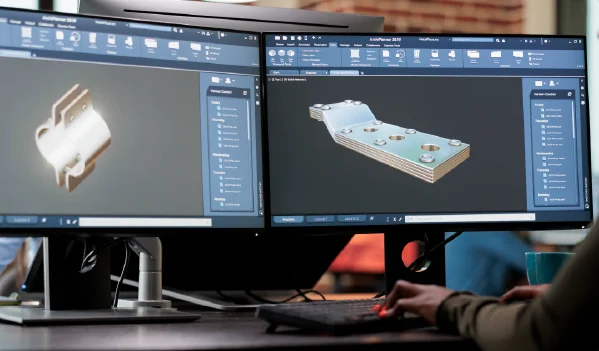
CAM, or Computer-Aided Manufacturing, is a crucial aspect of the mold making process. Simply put, CAM involves using computer software and tools to automate the manufacturing process, allowing for greater precision, efficiency, and consistency.
When it comes to mold making, CAM is used to program machines to carve out the specific shape and design of a mold. This is done through a series of steps, including designing the mold using 3D modeling software, generating toolpaths to guide the machines in creating the mold, and setting parameters for the cutting, drilling, and milling operations.
One of the primary advantages of CAM in mold making is the ability to create highly complex molds with intricate designs and details. CAM allows for the precision and accuracy needed to create molds without the risk of human error, resulting in a more consistent and reliable product.
Another benefit of CAM in mold making is its ability to reduce the time and cost associated with traditional manufacturing methods. The software and tools used in CAM are highly efficient and can create molds much faster and with less material waste than traditional methods.
Overall, CAM plays a critical role in the mold making process, providing manufacturers with the tools and technology needed to create high-quality products quickly and efficiently.
Advantages of CAM Automation in Mold Manufacturing
- One of the most significant advantages of CAM automation in mold manufacturing is increased efficiency. By automating repetitive and time-consuming tasks, CAM software eliminates the need for manual labor. This frees up valuable time for employees to focus on more critical aspects of the manufacturing process. Additionally, CAM automation streamlines production workflows, optimizing toolpaths, and minimizing errors. Resulting in improved overall productivity and reduced downtime.
- Enhanced precision and accuracy are also major advantages of CAM automation. CAM software ensures consistent mold quality by eliminating variations caused by human error. Complex geometries that would be difficult or time-consuming to achieve using manual methods are effortlessly handled by CAM software. It can generate intricate toolpaths and manage tool changes with ease, resulting in molds that surpass the precision achievable through manual processes.
- Another advantage of CAM automation in mold manufacturing is faster time-to-market. Rapid prototyping is made possible with CAM automation, allowing manufacturers to quickly iterate and test molds before final production. This accelerates the mold development phase, enabling quicker product iterations and reducing time spent in the design and testing stages. Additionally, CAM automation allows for faster machining speeds, reducing lead times and enabling manufacturers to bring their products to market more rapidly.
- Cost savings are another significant benefit of CAM automation. CAM software optimizes cutting paths and nesting strategies, maximizing material usage and minimizing waste. This results in reduced material costs for manufacturers. Moreover, the automation of manual labor reduces reliance on manual workers, leading to significant cost savings over time.
- CAM automation also brings improved flexibility and adaptability to mold manufacturing. Design changes can be quickly implemented and modified with CAM software, reducing the need for time-consuming manual adjustments. Additionally, CAM automation allows manufacturers to handle both small and large-scale production runs efficiently. It can adapt to changing production demands, providing manufacturers with the flexibility needed to meet customer requirements effectively.
- Furthermore, the advantages of CAM automation in mold manufacturing provide a competitive edge in the market. Manufacturers can respond to market demands more rapidly, thanks to the streamlined processes and faster time-to-market facilitated by CAM automation. Additionally, the ability to quickly iterate molds fosters innovation and customization opportunities, allowing manufacturers to stand out from their competitors.
Types of CAM Software Used in Mold Manufacturing
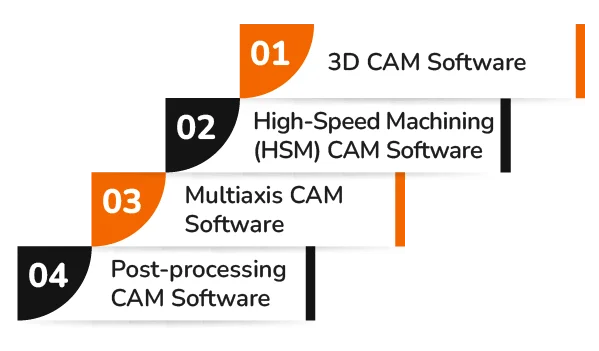
Various types of CAM software are available in the market, each catering to specific needs and requirements of mold manufacturers. Let's explore some of the most commonly used types of CAM software in mold manufacturing.
3D CAM Software:
3D CAM software is specifically designed to handle complex three-dimensional mold designs. It offers advanced capabilities to create toolpaths that accurately navigate intricate geometries, ensuring precise machining.
This type of software is particularly useful in mold manufacturing, where molds often have intricate curves, pockets, and contours that require precise cutting, profiling, and finishing.
3D CAM software allows mold manufacturers to generate optimized toolpaths, simulate machining processes, and visualize the final result before the actual manufacturing begins.
High-Speed Machining (HSM) CAM Software:
HSM CAM software is designed to maximize cutting speeds and optimize toolpaths for high-speed machining operations. It is ideal for mold manufacturing, where time and efficiency are critical factors.
This software harnesses the power of advanced algorithms and optimization techniques to generate toolpaths that minimize machining time while maintaining accuracy and surface finish.
HSM CAM software also offers features such as adaptive toolpaths that can adjust cutting speeds based on the material and tool conditions, further improving efficiency and productivity.
Multiaxis CAM Software:
Multiaxis CAM software is specifically tailored to handle molds that require complex machining operations involving multiple axes.
Mold manufacturing often involves creating undercuts, intricate cores, or cavities with compound curves that cannot be machined using traditional three-axis machines.
Multiaxis CAM software enables manufacturers to program five or more axes, allowing for simultaneous and synchronized movements of the cutting tool in multiple directions. This flexibility opens up possibilities for machining complex mold features accurately and efficiently.
Post-processing CAM Software:
Post-processing CAM software is a critical component in the mold manufacturing process. It takes the generated toolpaths and converts them into machine-specific instructions (G-code) that can be understood by CNC machines.
This software ensures compatibility between CAM software and the machines being used. It considers the specific machine's capabilities, tooling, workpieces, and other factors to generate customized machine instructions.
Post-processing CAM software streamlines the transition from CAM software to CNC machines, minimizing errors and optimizing the manufacturing process.
The choice of CAM software depends on the specific requirements of the mold manufacturing process. Some manufacturers may opt for a combination of software types to achieve the desired results. It is crucial to select software that aligns with the complexity of the mold design, machining capabilities, and desired outcomes.
Best Practices for Implementing CAM Automation in Mold Manufacturing
Implementing CAM automation requires careful planning and execution. To ensure a successful integration, it is crucial to provide comprehensive training and support to employees. Training programs should equip staff with the necessary skills to operate and optimize the CAM software effectively. Additionally, fostering a culture of continuous learning and improvement within the organization will enable the team to adapt to new tools and techniques.
Moreover, collaborating with CAM automation experts during the implementation phase can provide invaluable guidance and insights. By leveraging their expertise, manufacturers can identify areas for improvement, customize the software to fit their unique processes, and establish a solid foundation for success.
Examples of CAM Software Used in Mold Manufacturing
Mastercam:
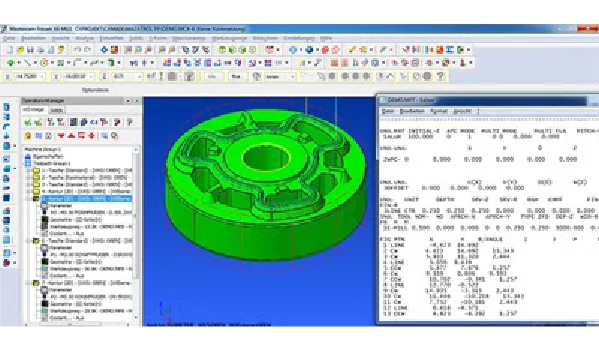
Image Source - Mastercam
Mastercam is one of the most widely used CAM software in the manufacturing industry, including mold manufacturing.
With its powerful 3D modeling and machining capabilities, Mastercam allows moldmakers to create complex mold designs and generate precise toolpaths for machining.
It offers a variety of specialized features tailored specifically for mold manufacturing, such as advanced surface finishing and mold core and cavity machining.
Mastercam's intuitive interface and robust tool libraries make it a popular choice among mold manufacturers looking for a comprehensive CAM software solution.
Siemens NX CAM:

Image Source - Siemens
Siemens NX CAM is a feature-rich CAM software widely used in mold manufacturing.
This software offers advanced capabilities for 3D modeling, toolpath generation, and simulation.
NX CAM includes specialized modules for mold design and machining, allowing manufacturers to efficiently produce molds of various complexities.
Its extensive library of machining strategies, such as high-speed machining and adaptive milling, enables mold manufacturers to optimize their manufacturing processes for efficiency and accuracy.
Siemens NX CAM's integration with other Siemens PLM solutions provides a seamless workflow from design to manufacturing.
PowerMill:
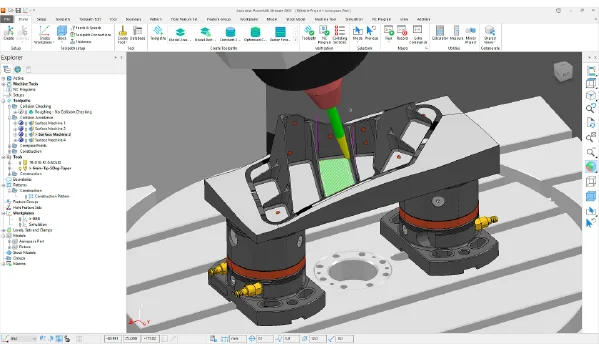
Image Source - PowerMill
PowerMill is a CAM software specifically designed for complex and high-precision manufacturing, making it a valuable tool for mold manufacturing.
This software's advanced algorithms and toolpath strategies enable manufacturers to efficiently machine molds with intricate geometries and challenging features.
PowerMill offers specialized modules for mold machining, providing dedicated toolpath strategies for finish machining, cavity extraction, and core creation.
Its simulation and collision detection capabilities help minimize errors and optimize machining times.
PowerMill's comprehensive range of milling strategies, including high-speed machining and five-axis machining, make it a versatile option for mold manufacturers.
Conclusion
CAM automation has revolutionized the mold manufacturing industry, offering manufacturers the advantages of cost savings, improved quality control, increased efficiency, and enhanced precision. By selecting the right CAM software, implementing best practices, and embracing a culture of innovation, manufacturers can unlock the full potential of CAM automation and gain a competitive edge in the market.
With technology evolving rapidly, now is the time to explore CAM automation in mold manufacturing and embrace the future of efficient and precise manufacturing processes.
